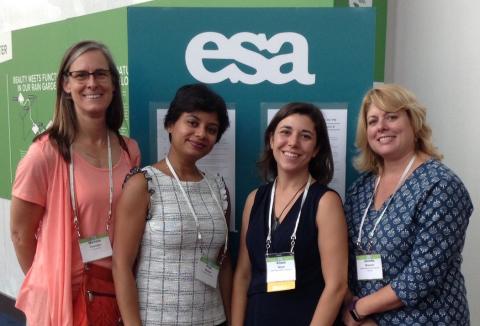How Can NASA Remote-Sensing Data Inform Your Research?
Ecologists are increasingly interested in questions that can be addressed only by integrating data from numerous sources, often across large geographic areas and broad time periods. NASA's airborne and space-borne sensors supply a variety of high-resolution environmental data that are designed to inform global change and terrestrial ecological studies. However, few ecologists have the specialized training and software necessary to manipulate these data to extract the information relevant to their particular research.
The aim of this workshop is to provide a beginner's level introduction to NASA's remote-sensing and ground-based ecological data and demonstrate user friendly tools to access, subset, and visualize this data. We will highlight data from NASA's MODIS (Moderate Resolution Imaging Spectroradiometer) which views the Earth's surface every 2 to 8 days, collecting data in 36 spectral bands. Land products generated from MODIS include land surface temperature, reflectance, vegetation indices, phenology, land cover, productivity, and photosynthesis. We will also discuss Daymet daily meteorology data, soil moisture data from the SMAP satellite, land elevation, and other NASA data collections. This workshop serves as a practical introduction to working with remote-sensing data, file formats, and analysis packages (such as R) to enable ecologists to easily access and synthesize remote sensing data in their research.
Presentations and example files from the workshop are available at Ecology from Space .


